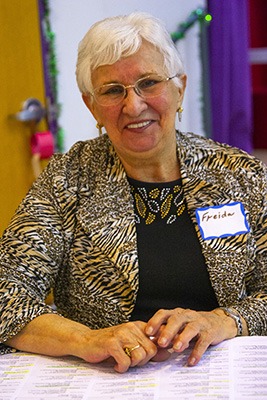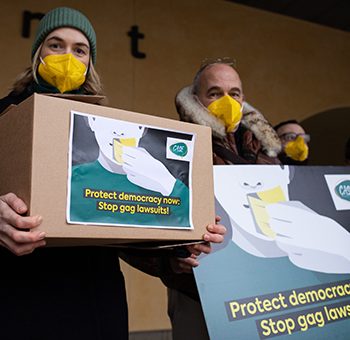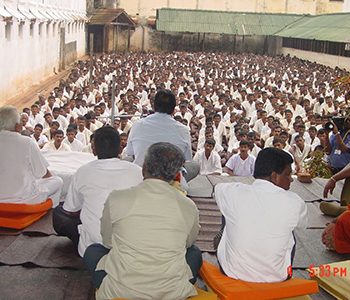The modern world excels at building systems, but it fails at building communities. It constructs highways, shopping malls, and corporate towers, yet leaves people with nowhere to simply exist together.
The result is a profound social alienation, where people move through life as isolated units rather than members of a collective whole. In the past, town squares, religious spaces, and neighborhood gathering places naturally provided this function. But as public spaces are privatized as spaces of consumption, the fabric of community life unravels.
Nowhere is this more evident than in how we treat our elders. In many traditional societies, elders were the keepers of wisdom, respected for their experience and entrusted with guiding younger generations. The Iroquois Confederacy gave elders a vital role in decision-making, ensuring that the accumulated knowledge of the past shaped the future. In contrast, modern industrialized nations treat aging as an inconvenience, relegating older people to isolation, whether in underfunded nursing homes or in homes of their own, unseen and unheard.
Loneliness among seniors is a silent epidemic. Studies show that social isolation increases the risk of dementia, heart disease, and depression. A report from the National Institute on Aging found that chronic loneliness is as harmful to health as smoking 15 cigarettes a day. In Japan, where extreme social isolation among the elderly has led to a rise in lonely deaths (kodokushi), the government has vested in senior-focused community centers to combat the crisis. The U.S., however, has done little to address the problem beyond occasional token programs.
But the need for community centers extends beyond seniors. They are vital for young families, for immigrants trying to integrate, for teenagers who need safe places to gather, and for anyone who seeks connection outside of digital screens. Historically, community centers have been lifelines during times of crisis, serving as food distribution hubs, emergency shelters, and organizing spaces for local advocacy. When Hurricane Katrina devastated New Orleans, churches and community centers were the first to provide aid, long before government assistance arrived. Strong public spaces make societies resilient.
Countries that prioritize communal infrastructure see the benefits. Denmark has extensive publicly funded forsamlingshuse—gathering houses open to all, where people of all ages meet, share meals, and participate in local decision-making. In Finland, kulttuuritalo (culture houses) provide childcare, arts programs and senior activities, so that everyone has a place to belong. These are not welfare programs, but essential elements of civic life—investments in social health just as critical as investments in roads.
Yet in the United States, community and senior centers are chronically underfunded, treated as afterthoughts rather than necessities. Cities spend billions on new stadiums for billionaire-owned sports teams but close down public spaces for lack of funding. The result is predictable: loneliness rises, crime increases, and social cohesion weakens. When people have no shared space, they cease to see themselves as part of a collective.
Community and senior centers must be treated as vital infrastructure, not optional amenities. They must be easily accessible, well-funded, and built in every town and neighborhood. Their programs must be free or low-cost, ensuring that economic barriers do not exclude anyone. They must offer everything from intergenerational mentorship programs to arts and cultural events to mental health support. When designed well, these centers become not just places to visit, but anchors of communal life.
Therefore, under Folklaw:
Every community shall have publicly funded and accessible gathering spaces that serve all ages, with a particular focus on seniors and intergenerational connection. No town or city may neglect the creation and maintenance of these centers. Funding shall be allocated to ensure they remain vibrant, well-staffed, and open to all. A nation without communal spaces is but a collection of strangers.
Resolution
A RESOLUTION TO ENSURE THE CREATION AND MAINTENANCE OF PUBLIC COMMUNITY AND SENIOR CENTERS
SUBJECT: Establishing and funding public community and senior centers as vital infrastructure for social connection, well-being, and resilience.
WHEREAS strong community ties are the foundation of a humane, resilient society, and public spaces for gathering are essential for fostering these connections;
WHEREAS community centers have historically served as critical spaces for intergenerational bonding, cultural exchange, and collective action, providing crucial resources in times of need, such as during crises like natural disasters or public health emergencies;
WHEREAS a lack of accessible, community-centered spaces has led to social isolation, particularly among seniors, who are disproportionately affected by loneliness, which has been shown to have serious consequences for physical and mental health;
WHEREAS communities that prioritize the creation of inclusive public spaces, such as Denmark’s forsamlingshuse and Finland’s kulttuuritalo, see enhanced social cohesion, intergenerational collaboration, and improved mental health outcomes for all residents;
WHEREAS the U.S. has failed to consistently invest in community and senior centers, with too many facilities underfunded or closed due to budget shortfalls, while private enterprises like sports stadiums receive vast subsidies at the expense of social infrastructure;
WHEREAS the underfunding of community spaces leads to diminished social resilience, increases in crime, and a fractured sense of collective identity and purpose;
NOW, THEREFORE, BE IT RESOLVED that every community shall have publicly funded and accessible gathering spaces that serve people of all ages, with particular emphasis on fostering intergenerational connections and supporting seniors, families, and vulnerable populations;
BE IT FURTHER RESOLVED that community and senior centers shall be designed to offer a wide range of programs, including mentorship, arts, mental health services, social activities, and educational opportunities, ensuring that all residents can access resources that foster connection, well-being, and personal growth;
BE IT FURTHER RESOLVED that these centers shall be funded sufficiently to remain open, vibrant, and well-staffed, providing free or low-cost programs that eliminate economic barriers to participation;
BE IT FURTHER RESOLVED that the design and implementation of community and senior centers will prioritize accessibility, inclusivity, and the needs of marginalized communities, ensuring that all people, regardless of income or background, can access safe, welcoming spaces;
BE IT FURTHER RESOLVED that these centers will be integrated into public health strategies, serving as hubs for mental health support, wellness programs, and community resilience-building activities that contribute to a stronger social fabric;
BE IT FURTHER RESOLVED that local governments will be required to allocate sufficient funding to establish and maintain these centers as foundational elements of civic infrastructure, akin to schools, libraries, and public transportation systems;
BE IT FURTHER RESOLVED that the government shall provide ongoing support for community centers to be adaptable to changing social needs, fostering a dynamic, participatory space for residents to engage in the process of local decision-making and problem-solving.
Fact Check
Fact-Checking the Key Claims:
Loneliness and Health Risks
National Institute on Aging (NIA) & Other Research Findings
The National Institute on Aging (NIA), the U.S. Surgeon General, and multiple health studies confirm that chronic loneliness and social isolation significantly increase health risks.
Research has found that loneliness is linked to higher risks of heart disease, stroke, cognitive decline, and early mortality.
A well-cited meta-analysis published in 2010 (Holt-Lunstad et al.) compared the health risks of loneliness to smoking 15 cigarettes a day.
U.S. Surgeon General’s 2023 Report
In 2023, U.S. Surgeon General Dr. Vivek Murthy released a report on the epidemic of loneliness, reinforcing the claim that loneliness has health effects comparable to smoking 15 cigarettes per day.
The report highlighted that social isolation increases the risk of premature death by 26-29%.
Why Loneliness is Harmful
Chronic loneliness triggers stress responses, increasing inflammation and weakening the immune system.
It is linked to higher blood pressure, depression, and an increased risk of dementia.
Lack of social connection affects overall mental and physical health, similar to smoking and other lifestyle-related risks.
✅ Verdict: True
Certainty: 95% (Widely supported by NIA, the U.S. Surgeon General, and peer-reviewed studies)






Discussions
There are no discussions yet.